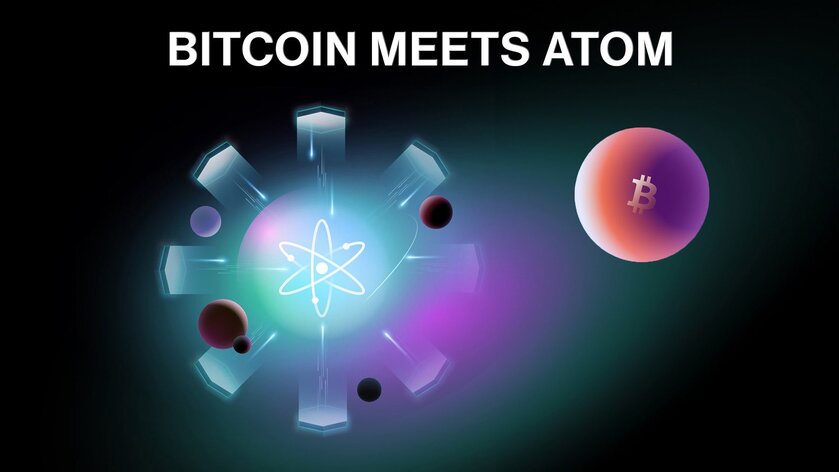💥 Bitcoin Meets Atom - Enter Security Aggregation!
The Cosmos Hub is positioned to evolve as a leading security aggregator, bringing together security from various sources.
Starting with Bitcoin through a collaboration with @babylon_chain, let's dive into what's coming 🧵
The @babylon_chain & @informalinc teams are working to onboard the Bitcoin community into the Cosmos Hub.
Bitcoin holders will be able to stake their bitcoins to secure Hub Consumer Chains.
Potentially bringing billions in security, powered by Cosmos Hub Security Aggregation.
The synergy between @babylon_chain & Cosmos Hub relies on 3 pillars:
1. Give ICS consumer chains access to hundreds of billions of dollars in potential security.
2. Solidify Cosmos Hub’s position as a security aggregator.
3. Onboard Bitcoin holders to the ATOM economic zone.
Security Aggregation is an enhancement to Cosmos Hub ICS; if approved by Hub governance, it could strengthen Cosmos Hub's position as the gateway of new crypto communities into the #interchain
Cosmonauts! What's in store for 2024? 👀
This year, the #CosmosHub cemented its position in the shared security landscape with the launch of Interchain Security!
A novel model that gave birth to the #AEZ, a dominant narrative pioneering alignment between blockchains!
These are solid achievements that, with improvements, are set to position the Cosmos Hub with a unique product offering in the blockchain industry.
In the following post, @JTremback, the product owner for the Cosmos Hub at @informalinc, will share the next steps entering 2024!
''For the following year, the @informalinc Hub team is looking at optimizing Interchain Security (ICS) to reduce costs, increase adoption, and position the Hub for the shared security marketplace of the future!
This will be a long read, but bear with me to glimpse the disruptive potential of the Cosmos Hub in 2024!
In 2023, we gathered many data points about ICS's strengths and weaknesses. One of ICS's surprising strengths is that it is an all-or-nothing protocol.
A chain is either consuming security or not; this creates a degree of alignment between consumer chains and the Hub and between consumer chains themselves.
Furthermore, ICS's strength stands in simplifying security:
-The consumer chain receives the entire security of the Hub.
-The delegator receives rewards from all consumer chains.
I'll expand on how this simplicity can be leveraged at the end of this thread.
Now, let's consider the weaknesses of ICS.
The first one is validator cost. Validators have felt that the (often 5%) commission on consumer rewards is insufficient to adequately compensate for the cost of running the consumer chain nodes.
They prefer to avoid raising their commission across the board because they are worried it will make them less competitive against the rest of the set. The current market has intensified these issues, and tokenomics choices by some consumer chains further amplified these concerns, but they are legitimate.
The second weakness is scale. Due to the cost issues, validators are hesitant to add many consumer chains quickly. This reduces the impact of ICS.
Now that we have highlighted the pros and cons of ICS, let's explore the solutions!
1) Adjustable per consumer chain validator commission.
This solution allows validators to balance rewards and costs for each consumer chain, as well as neatly resolving some deeper economic issues.
You can find details here: forum.cosmos.network/t/chips-discus…
2) Partial Set Security.
This solution allows only some of the validators in the set to run a physical node for each consumer chain. In contrast, the remaining validators delegate their stake to this subset.
The validators running the physical nodes receive all the commission, making the consumer chain more profitable for them. This gives validators a choice to sit out on a particular consumer chain, and if they choose to opt in, it's more profitable. At the same time, it avoids the subset problem (no need for fraud proofs), and keeps the simple all-or-nothing nature of ICS.
You can find details here: forum.cosmos.network/t/chips-discus… (thanks to @EffortCapital for the idea)
So now, with all this considered, how does this position the Hub in the broader security market?
At Informal Systems, we believe that with restaking protocols such as Eigenlayer, Mesh Security, and Babylon, shared security will soon become a fluid market. It is also a market that will be able to draw on security from the two biggest crypto-assets in the world, Bitcoin and Ethereum.
In such a market, simply selling security alone will not be as valuable. For this reason, even just installing the Mesh Security module does not mean that a chain selling security can automatically compete with Bitcoin's security weight.
In this new world of multiple shared security models, we think that security aggregation has immense value.
Cross-chain stakers do not want to figure out what validator to delegate to on 20 different chains. They would prefer to delegate to one system, which gives them access to PoS yield across a whole ecosystem.
And here is where the Hub could lead...
The Cosmos Hub with ICS is perfectly positioned for security aggregation within the #interchain
Imagine Bitcoin and Ethereum stakers having the chance to get PoS yield from a basket of the best chains in Cosmos in one place - A simple and direct UX.
If you read it until here, we are excited to share a sneak peek - yes, we're working on a partnership with a Bitcoin staking protocol to offer this on Bitcoin.
In this shaping future of security aggregation, ATOM stakers will get the best yield for staking the native asset. Still, adding BTC and other assets to the security mix will put the Cosmos Hub at the center of the shared security marketplace!
The above performance and cost improvements offered by variable commission and partial set security will allow us to continue to build momentum with ICS and take a strong lead with security aggregation in the coming shared security market.
At Informal Systems, we are excited to contribute to a future where the Cosmos Hub is the pioneer of security aggregation."
https://twitter.com/cosmoshub/status/1757095057566363753?s=19





























